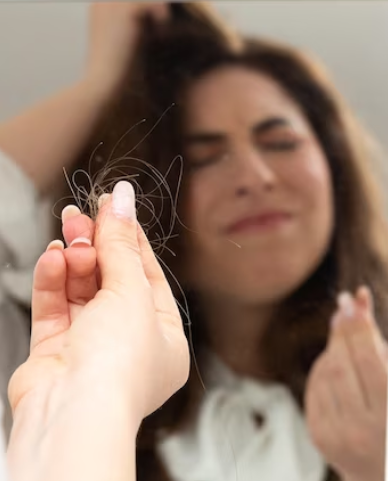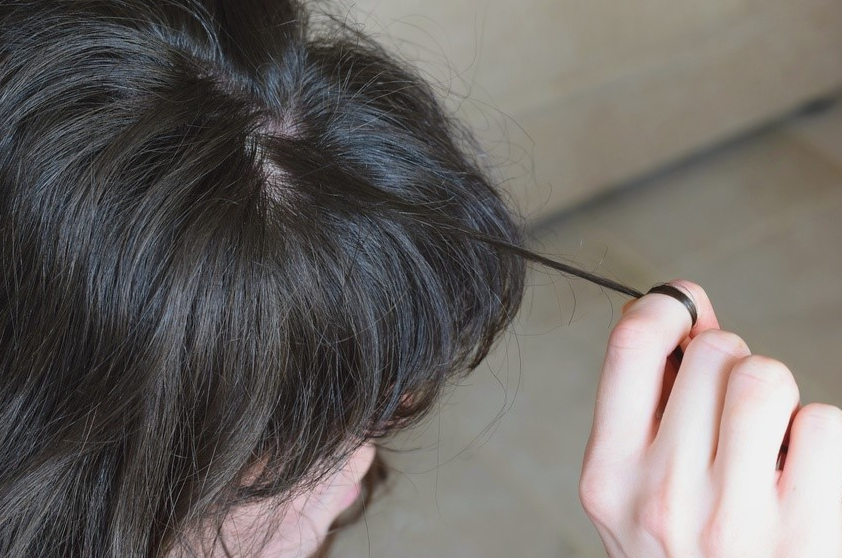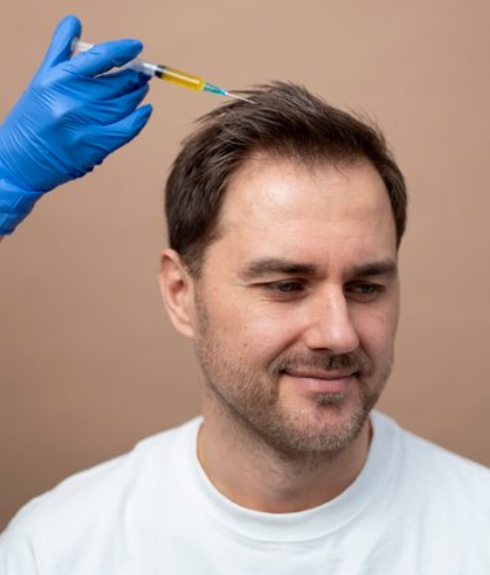Trichotillomania, commonly known as hair-pulling disorder, is a complex psychological condition characterized by the repetitive pulling out of one’s hair, leading to noticeable hair loss. As a dermatologist, it is imperative to provide a comprehensive understanding of this frequently misconstrued condition, its effects on individuals, and the various strategies available for managing and treating it.
Table of Contents:
What is Trichotillomania?
 Trichotillomania, a disorder studied under the branch of dermatology called psychodermatology, is categorized as an impulse control disorder, wherein individuals experience an irresistible urge to pull out their hair, resulting in significant distress and impairment in daily functioning. Although the exact cause of trichotillomania remains elusive, it is believed to stem from a blend of genetic predisposition, environmental factors, and psychological triggers.
Trichotillomania, a disorder studied under the branch of dermatology called psychodermatology, is categorized as an impulse control disorder, wherein individuals experience an irresistible urge to pull out their hair, resulting in significant distress and impairment in daily functioning. Although the exact cause of trichotillomania remains elusive, it is believed to stem from a blend of genetic predisposition, environmental factors, and psychological triggers.
Signs and Symptoms
To ensure early diagnosis and treatment of trichotillomania, certain features and manifestations should be observed. Typical manifestations encompass:
1. Repetitive Hair Pulling: The person who experiences trichotillomania will begin to constantly pull hair from his/her scalp, eyebrows, and/or eyelashes, or from other parts of the body like the genital area, beard, or mustache.
2. Patchy Hair Loss: When hair pulling has been continuous, one can easily observe bald areas on the affected person, and this causes them to develop different kinds of baldness.
3. Feelings of Tension and Relief: People suffering from this condition will experience tension before pulling out hair, and feelings of gratification after doing so.
4. Attempts to Conceal Behavior: People can feel ashamed of this illness, and they often do all they can to cover up their hair-pulling behavior. Thus, they often wear caps, wigs, patches, and even toupees.
5. Negative Impact on Daily Life: This disorder can limit an individual’s social interactions, cause low self-esteem, and disrupt one’s ability to work or go to school.

Coping Strategies for Trichotillomania
While trichotillomania can pose significant challenges, there are various coping strategies that individuals can include in their daily routine to manage troublesome symptoms and improve their overall well-being. They are as follows:
1. Cultivating Awareness and Mindfulness: To meet the goal when treating trichotillomania effectively, it is imperative to turn people’s attention to what triggers them, and the desire to pull their hair out. In addition, one can learn how to take control of impulses, taking advantage of mindfulness practices such as deep breathing and meditation.
2. Behavioral Therapy: Cognitive behavioral therapy (CBT) is useful in the treatment of trichotillomania. This is a type of treatment in which the patient is encouraged to identify unhealthy cognitive behaviors and then avoid them by adopting healthy behavioral patterns.
3. Habit Reversal Training: Habit reversal training or (HRT) is an advanced behavioral therapy technique that aims to replace hair pulling with other activities like clenching fists or engaging in any other tasks that involve the hands.
4. Stress Management: Since it is well understood that stress generally makes symptoms of trichotillomania more severe, it might be helpful for the patient to learn how to manage and reduce stress through such activities as exercise, yoga, or relaxation.
5. Support Groups: Getting in touch with and relating with others who understand and appreciate trichotillomania can be a great motivating force. Online communities, social media support groups, or even therapy sessions provide people with opportunities to share their own experiences and learn about new methods of dealing with their condition together.
Treatment Options
 When our coping mechanisms do not prove to be effective in achieving the desired outcomes, it is essential to explore alternative treatment avenues available to individuals struggling with trichotillomania, particularly when pharmacological intervention becomes necessary. The following options are worthy to be considered for addressing individuals with trichotillomania:
When our coping mechanisms do not prove to be effective in achieving the desired outcomes, it is essential to explore alternative treatment avenues available to individuals struggling with trichotillomania, particularly when pharmacological intervention becomes necessary. The following options are worthy to be considered for addressing individuals with trichotillomania:
1. Medication: Selective serotonin reuptake inhibitors (SSRIs) and other psychiatric medications may be prescribed to treat anxiety and depression, which is quite often associated with trichotillomania. Medication alone is usually insufficient and is commonly used together with therapy, such as CBT.
2. Topical Treatments: In cases where hair loss has occurred due to excessive pulling, topical treatments such as minoxidil may help stimulate hair regrowth at those sites. However, it is essential to address the underlying psychological aspects of trichotillomania for sustained effectiveness, because treating the root cause should be the doctor’s main focus.
3. Dermatological Interventions: Even though the cornerstone of treatment of trichotillomania is reassurance, CBT, and medication (if needed) or a combination of psychotherapy and pharmacological intervention, sometimes dermatological intervention is necessary. However, once the symptoms have been effectively managed, minimally invasive treatments such as platelet-rich plasma (PRP) therapy can be offered to ensure rapid regrowth of healthy hair on the scalp.
4. Trichoscopic Examination: Trichoscopy is a non-invasive technique used for examining the hair and scalp, and it can aid dermatologists in assessing the extent or degree of hair loss and monitoring treatment progress in individuals with trichotillomania.
What is the course and prognosis of trichotillomania?
Trichotillomania typically follows a milder and self-resolving course in younger children, and it rarely becomes chronic. Children usually outgrow the condition naturally as they age.
However, in adolescents and adults, trichotillomania can become episodic, but typically persists over time and becomes chronic. It is often linked with an increased level of psychological distress and can pose challenges in treatment. Those affected by this condition may experience embarrassment, resort to concealing hair loss, and consequently struggle with low self-esteem.
Conclusion
Trichotillomania is a complex disorder that requires a complex solution to be managed properly. Dermatologists should be aware of the manifestations of trichotillomania, acknowledge its presence, offer support, and refer the affected individuals to psychiatrists for an integrated treatment plan and to deliver holistic results. With the help of behavioral therapies, medication, as well as dermatological approaches, the majority of patients having trichotillomania can regain control over their condition and improve the quality of their lives. It is my sincere hope that increased awareness and understanding of trichotillomania will pave the way for improved outcomes for those grappling with this disorder.

 By myulikeadmin
By myulikeadmin



